WMG News - Latest news from WMG
WMG Academy students blast off to international space competition
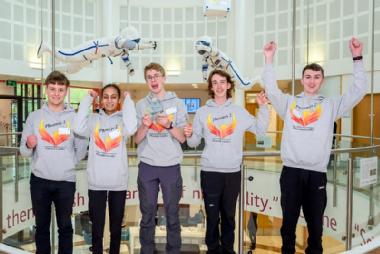 Students at the WMG Academy for Young Engineers are preparing for lift-off after being named UK national champions in the European Space Agency’s CanSat competition. Having launched themselves to the top spot in the UK, WMG Academy’s Team Phoenix 2 will soon blast off to the European finals.
Students at the WMG Academy for Young Engineers are preparing for lift-off after being named UK national champions in the European Space Agency’s CanSat competition. Having launched themselves to the top spot in the UK, WMG Academy’s Team Phoenix 2 will soon blast off to the European finals.
Inspired by NASA’s Phoenix Mars Lander mission, the young space explorers from Team Phoenix 2 have designed and manufactured a suborbital satellite capable of measuring and collecting temperature and air pressure data whilst looking for signs of life on a planet by sampling surface dust – all contained within the size and shape of a soft-drinks can. Launched to a height of 1,000 feet, the satellite descends, launching an integrated parachute before transmitting data back to the team at the command centre.
As part of the competition, the students, all aged between 14 and 17 years old and studying a combination of maths, science and engineering, have produced designs and prototypes, submitted testing data and launch reports, and presented to a team of experts, setting themselves apart from over 250 other entries and 12 finalists to take the title of UK national champions.
Commenting on the team’s success, WMG Academy Chief Executive, Stewart Tait, said: “Our students are clearly high-flyers with ambitions that are out of this world. We could not be more proud of Oliver, Joshua, Callum, Amneet, Timurs and George who have worked so hard to design an innovative and successful can-sized satellite.
“This year’s CanSat project was launched by Bob Hodge who has been an integral part of WMG Academy since we opened in 2014. Unfortunately, after a long illness, Bob sadly passed away just a few weeks ago and there is no better way to pay tribute to the time and energy Bob invested in the lives of our young engineers than continuing his legacy of inspiring the next generation through projects like CanSat.
"We are looking forward to taking Team Phoenix2 to the European finals to showcase the incredible engineering talent of WMG Academy students on the international stage.”
Notes to Editors:
- For media enquiries, please contact WMG Academy, Coventry, via info@wmgacademy.org.uk
- WMG Academy for Young Engineers is part of the WMG Academy Trust, consisting of two University Technical Colleges (UTC) in Coventry and Solihull. The Trust was founded by the late Professor Lord Bhattacharyya and works closely with WMG at the University of Warwick.
- WMG Academy offers an innovative curriculum of STEM subjects, working with local and national employers to deliver a ‘business-like, business-led’ pathway of study to prepare students for life beyond the classroom.
- Opening in 2014, WMG Academy Coventry was first-rated Good by Ofsted in 2017 and again in 2022. WMG Academy Solihull opened in 2016 and is also rated Good by Ofsted.
- WMG Academy has seen local, national and international success before in engineering projects including F1 in Schools, Greenpower, the Royal Navy UTC Challenge and the 2021 and 2022 CanSat competitions.
- The European CanSat Competition is an ESA Education project that promotes STEM skills amongst young European students through project-based learning. A CanSat is a simulation of a real satellite, integrated within the volume and shape of a soft drink can. The team’s challenge is to fit all the major subsystems of a satellite inside this minimal volume, launched by a small rocket up to an altitude of 1 km.
Social Media and External Links
- WMG Academy Website – www.wmgacademy.org.uk
- CanSat Website – https://www.esa.int/Education/CanSat
- CanSat Stem Learning - https://www.stem.org.uk/all-news/lift-off-for-winners-of-the-uk-cansat-competition-2023
- WMG Academy Facebook – https://www.facebook.com/WMGAcademyCov
- Team Phoenix Facebook – https://www.facebook.com/profile.php?id=100088983507094
- Team Phoenix Instagram – https://www.instagram.com/phoenix2cansat/Link opens in a new window
- Team Phoenix Twitter – https://twitter.com/Phoenix2cansat
- TikTok – https://www.tiktok.com/@phoenix2cansatLink opens in a new window
- Team Phoenix YouTube – www.youtube.com/@Phoenixcansat
WMG marks fifth anniversary of its Graduate Development Programme
WMG, at the University of Warwick, is celebrating the fifth anniversary of its Graduate Development Programme.
In the past five years, WMG has seen a total of 23 graduates complete the two-year scheme, with a further 24 part of the current programme.
Of those 23, 14 are working at WMG in engineering roles, and a further nine are employed by industry.
The programme provides graduates with an opportunity to accelerate their careers by undertaking a series of placements in different teams across the department.
Graduates complete up to three different project rotations in year one, followed by a more in-depth project in year two. It provides the perfect opportunity for self-discovery and valuable work experience, whilst earning a competitive graduate salary.
The scheme has grown in size since it was first launched, and graduates are now offered four distinct pathways of Energy Innovation; Smart, Connected & Autonomous Vehicles; Materials & Manufacturing, or Catapult Projects.
Friya Tailor, who completed the Energy Innovation pathway, and is now a Project Engineer at WMG, commented: “I became aware of the WMG Graduate Development Programme during my MSc project at the University of Nottingham.
“My research involved the development of lithium-sulfur cells for a range of applications. This closely linked to the everyday activities performed at WMG, which was my motivation for applying to the programme. The graduate scheme allowed me to translate the knowledge and skills obtained during my degree and use it in world-class projects with automotive industry partners. The rotational programme encompasses various placements that pushed me to work proactively and develop vital skills required in any working environment.”
Shivam Mishra, joined in 2021 after completing a B.Eng in Mechanical Engineering and a MSc in Sustainable Automotive Electrification. He commented: “I have worked in various domains ranging from automotive powertrains to aerospace motor manufacturing, learning both technical as well as professional skills. Working closely with industrial partners has given me the opportunity to enhance my commercial awareness in this ever-changing sustainable industry. I have improved my CAD and modelling skills along with learning niche hands-on manufacturing skills. I have also developed technical report writing skills allowing me to publish my first conference paper with my team.”
Harry Boyce, who is now a Project Engineer in the Automation Systems Group at WMG, commented: “The WMG graduate scheme is ideal for anyone who is keen to both develop their technical and personal skills. You have the flexibility to choose the direction for your projects and learn from an experienced supervisor.
“In my opinion the scheme is a great stepping-stone into research and industry from university. The strongest aspect of the scheme is the focus on development for the graduate. The Project Management module in the first year is a great example, this provides a certification in project management from the APM, and provided me with many useful skills I could apply to my projects.”
The opportunity to work on projects that have a real impact on society is a key driver for many applicants. Anima Rahman studied Electronic and Electrical Engineering, and is currently in the second year of the scheme. She commented: “A career in research is working with tomorrow’s technology. It is a chance to gain an insight into current challenges in the industry and play an active role in overcoming them.”
Jet Feng, who completed the scheme and is now a Lead Engineer at WMG added: "I think one of the most important aspects of the graduate scheme is the people I met. They have shaped who I am both professionally and personally, and taught me valuable life lessons that I will keep forever."
For some graduates the scheme has also opened up the opportunity for further study, with two of the 2021 cohort now studying for a PhD at WMG.
The scheme is part-funded by the High Value Manufacturing Catapult, under the theme of Workforce Development. The UK has a shortage of skilled workers in the engineering sector, and it was recognised, by the Catapult that initiating and supporting a scheme that could upskill STEM graduates would be valuable to all – WMG as an organisation, the graduates themselves, and industry partners. In addition, WMG is keen to promote a diverse workforce in the STEM sector, in particular, encouraging applications from females and from BAME communities. Graduates on the scheme have generally studied engineering at university, although some have studied other STEM subjects
The scheme provides an opportunity to gain experience in different fields, without having to commit completely to one specific area. By rotating around a variety of placements, the graduates are able to build their confidence and skills, as well as learning what sort of work they enjoy and may wish to pursue.
In October 2023 a new intake of graduates will begin the scheme. Find out more about the programme here :https://warwick.ac.uk/fac/sci/wmg/careers/gs/
WMG inspires young engineers at Engineering Industry Day
On Tuesday 25th April, the Outreach Team at WMG, University of Warwick hosted an Engineering Industry Day.
The Team welcomed 200, year 9 and 10, students who were identified by their teachers as students, from groups under-represented in engineering and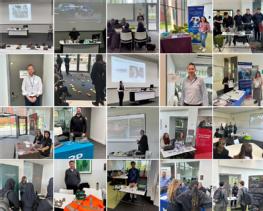 STEM careers, with an interest and a potential to do well in those subjects.
STEM careers, with an interest and a potential to do well in those subjects.
The students came from schools across the region including Eden Girls School Coventry; WMG Academy for Young Engineers in Coventry and Solihull; Colmers School and Sixth Form College; Nicholas Chamberlaine School; Lyndon School; Harris Church of England Academy; Barr’s Hill School and Community College; and KEVI Northfield School for Girls.
The group was welcomed by Professor David Greenwood, the CEO of the High Value Manufacturing Catapult and Director for Industrial Engagement at WMG, before being taken on a tour of the STEM facilities on campus.
Along with their teachers, they met academics and students, and heard about the research being carried out by the High Value Manufacturing Catapult; WMG and the School of Engineering. WMG Technical Services and the apprentices demonstrated their skills, and the Student Project teams - Warwick Racing and Warwick Mobile Robotics - showcased their work and shared their experience of studying engineering.
Participants also met with local companies including Jaguar Land Rover; Tata Motors; Aston Martin; National Grid ESO; Balfour Beatty; Wates; Willmott Dixon; National Grid; Tarmac and 3P Innovation, who provided them with advice and guidance about the skills and knowledge required to become an engineer.
They also received information about a range of support available from the Degree Apprenticeship Team; Student Funding; the Warwick Scholars Access Programme; the Sutton Trust Pathways to Engineering; the Royal Academy of Engineering’s Educational Programme and the Engineering Development Trust Programme.
WMG’s Outreach Project Officer, Marie Diebolt, who organised the event, explained: “With these types of events, and across our outreach activities, we work with our partners to close the engineering skills gap and inspire young people to pursue careers in STEM. We purposely timed the event to coincide with students selecting their GCSE subjects to enable them to make an informed choice and inspire them to consider a range of careers in engineering.”
 Professor David Greenwood added: “We know that the UK manufacturing sector has a big skills gap – which WMG is keen to fill. Events like these help to shine a spotlight on the exciting career prospects in manufacturing – thanks to advances in digitalisation, automation and sustainability. The opportunity to speak to potential future engineers was a privilege, and the event was a great success.”
Professor David Greenwood added: “We know that the UK manufacturing sector has a big skills gap – which WMG is keen to fill. Events like these help to shine a spotlight on the exciting career prospects in manufacturing – thanks to advances in digitalisation, automation and sustainability. The opportunity to speak to potential future engineers was a privilege, and the event was a great success.”
Find out more about WMG’s Outreach programme here: Public engagement and Outreach (warwick.ac.uk)
WMG announces new partnership with global engineering company
WMG, at the University of Warwick, has announced a new two year research partnership focusing on sustainable high-performance sealing materials.
Researchers at WMG’s Link opens in a new windowInternational Institute for Nanocomposites Manufacturing (IINM), led by Dr Chaoying Wan, will be working with experts at James Walker to develop the next generation of sealing compounds which will be compliant with future per- and poly- fluoroAlkyl substances (PFAS) regulations.
In February 2023, the European Chemicals Agency announced a proposal for the European Economic Area that will effectively lead to a ban on all PFAS materials, due to their persistence in the environment.
This research project will use high quantity techniques to develop and identify novel elastomer compounds that comply with proposed PFAS regulations, for use in critical industrial applications drawing on WMG’s expertise in elastomer and polymer technology.
The new technologies developed will have a high impact on a wide range of industries from transportation, oil/gas, semiconductor to hydrogen storage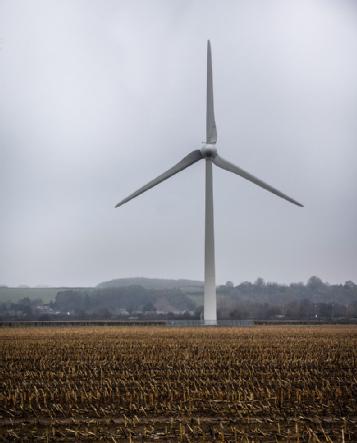 and wind turbines.
and wind turbines.
Conventional high performance sealing compounds rely on PFAS, as these materials are resistant to extremes of temperature and aggressive chemicals. PFAS are essential to the semi-conductor, aerospace, petrochemical, defence and nuclear industries for example, and there are currently no suitable replacement materials available. Alternative sealing materials are urgently needed to substitute PFAS.
Dr Mike Eason, Technical and Quality Director at James Walker commented: "Industrial dependence on PFAS elastomers is a global issue with supply chain impact already seen. I am delighted that we will work with Dr Wan and her team to identify and develop materials which will help industry be compliant with the proposed regulations. This partnership will accelerate James Walker’s development of seal materials for critical industry. WMG has small scale, advanced, mixing capability, with knowhow regarding nanofillers and polymer science that will allow James Walker to rapidly design, manufacture and screen bench-scale test formulations.
“I believe the combination of James Walker’s history and expertise in critical industrial sealing together with WMG’s state of the art capabilities will enable rapid development and commercialisation of materials. James Walker is committed to developing solutions to the PFAS regulations faced by global industry."
Dr Chaoying WanLink opens in a new window, Reader of Functional Polymers and Nanocomposites at WMG, University of Warwick explains: "Collaborating with James Walker to develop alternatives for PFAS seals is an important and exciting opportunity. Our elastomer research facility is supported by High Value Manufacturing Catapult CentreLink opens in a new window (HVMC), equipped with the latest technology, including a rubber process analyser (RPA) with wide temperature range - it is the only one in the UK, and one of only a few in the world with the capability to simulate dynamic elastomer performance at very low temperature.
“This function is extremely useful to compare differences in formulation design for applications such as high pressure or low temperature sealing. I am very much looking forward to working with the James Walker team on the development of new material options for high performance sealing applications and advancing our knowledge of polymer formulation and performance."
Find out more about WMG’s Nanocomposites research here: Nanocomposites (warwick.ac.uk)
WMG celebrates a decade of Engineering Masterclasses
The Outreach Team, at WMG at the University of Warwick, is proud to have completed a decade of Royal Institution Engineering Masterclasses.
Over the past 10 years staff and students, from WMG, have supported 250 pupils from 45 schools across Warwickshire and the West Midlands. The Masterclasses have opened the eyes of young people to the excitement and value of engineering and, have in turn, inspired the next generation of scientists, mathematicians and engineers.
A special celebration event was held to mark the occasion with 2023 masterclass students and their families and teachers. At the event, University of Warwick alumna and award-winning engineer, Yewande Akinola delivered a key note before presenting certificates in a mini graduation ceremony.
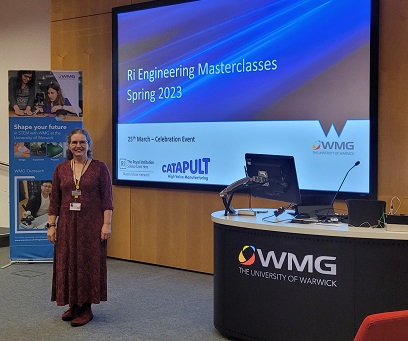 Professor Margaret Low, WMG’s Director of Outreach and Widening Participation said: “WMG has supported the Ri with the masterclasses, since 2013, with workshops and activities that put our cutting-edge engineering research into context for young people. We even found a way to deliver the activities online during the pandemic.
Professor Margaret Low, WMG’s Director of Outreach and Widening Participation said: “WMG has supported the Ri with the masterclasses, since 2013, with workshops and activities that put our cutting-edge engineering research into context for young people. We even found a way to deliver the activities online during the pandemic.
“These experiences allow students to see how their school learning applies to complicated and world-changing technologies. Through our outreach programmes we hope to inspire young people to pursue careers in STEM, widen participation in higher education and make the STEM workforce more diverse.”
Mujthaba Ahtamad (Mosh), Senior Teaching Fellow at WMG, who worked alongside Professor Margaret Low on some of the original masterclass sessions, said: “With Margaret’s enthusiasm and motivation, she really brought everything together, including inspiring the teaching team. It was really evident that the attendees were very excited to attend the Masterclasses, (perhaps more so than attending school!).”
Dr Phil Jemmett, Widening Participation Co-ordinator at WMG added: “The Royal Institution is a prestigious organisation with a long history of being at the forefront of teaching science. Partnerships between universities in the local community, and the fact that these famous, royal-chartered groups are housed only a stone’s throw from Buckingham Palace, adds so much value to the student experience.
forefront of teaching science. Partnerships between universities in the local community, and the fact that these famous, royal-chartered groups are housed only a stone’s throw from Buckingham Palace, adds so much value to the student experience.
“This is not just an extra lesson that happens to be on a Saturday, this is an experience of just how far these students can go with their engineering talents. We hope that the students felt every bit of the prestige of both WMG and the Royal Institution.
“We would also like to thank the High Value Manufacturing Catapult who have supported these activities since 2019.”
Rachel Dorris, Clothworkers’ Fellow of Mathematics at the Royal Institution, said: “On behalf of the Royal Institution and the Masterclass team, I would like to congratulate you for successfully shepherding the Engineering Masterclasses at WMG to its 10th anniversary.
“We appreciate your hard work as an Ri collaborator - inspiring future generations within your community in the world of engineering.”
Find out more about WMG’s Outreach Programme here: Public engagement and Outreach (warwick.ac.uk)
How road rage really affects your driving – and the self-driving cars of the future
 New research by WMG at the University of Warwick has identified characteristics of aggressive driving – which impact both road users and the transition to self-driving cars of the future.
New research by WMG at the University of Warwick has identified characteristics of aggressive driving – which impact both road users and the transition to self-driving cars of the future.
In the first study to systematically identify aggressive driving behaviours, scientists have measured the changes in driving that occur in an aggressive state. Aggressive drivers drive faster and with more mistakes than non-aggressive drivers – putting other road users at risk and posing a challenge to researchers working on self-driving car technology.
The research comes as a leading Detective Chief Superintendent, Andy Cox, warns of the perils of such driving – warning that the four-five deaths on UK roads daily are “predominantly caused by dangerous and reckless drivers”.
The study categorised aggressive driving behaviours and showed the key aspects of this dangerous driving style. Published in Accident Analysis and Prevention, it reported key findings:
- Aggressive drivers have a 5km/h mean faster speed than non-aggressive drivers;
- Aggressive drivers also exhibit more mistakes than control groups – such as not indicating when changing lanes;
- Aggressive driving is categorised as any driving behaviour that intentionally endangers others psychologically, physically, or both.
Lead author of the study Zhizhuo Su, PhD student, across both the Intelligent Vehicles Research Group and the Institute of Digital Healthcare at WMG, University of Warwick, said: “While it’s unethical to let aggressive drivers loose on the roads, participants were asked to recall angry memories, putting them in an aggressive state, while performing a driving simulation. These were compared to a control group, who weren’t feeling aggressive.
“This research is significant because, as the era of autonomous vehicles approaches, road traffic will be a mix of both autonomous and non-autonomous vehicles, driven by people that may engaged in aggressive driving. This is the first study to characterise aggressive driving behaviour quantitatively in a systematic way, which may help the autonomous vehicles identify potential aggressive driving in the surrounding environment."
Roger Woodman, Assistant Professor at WMG and co-author of the study, added: “Over the last few decades, road safety policies, infrastructure changes, and improved vehicle safety have significantly reduced road casualties. However, human error, which is often a result of aggressive driving, remains a leading cause of crashes. To make driving safer, our research focuses on methods for understanding the state of the driver, to identify risky driving behaviours, through the use of driver monitoring systems (DMS). This will enable the driver to be alerted when they are at an increased risk of an accident and allow the vehicle to deploy calming methods, such as altering the cabin noise level, playing relaxing music, or ultimately reducing the speed of the vehicle.”
Detective Chief Superintendent Andy Cox, NPCC lead for fatal crash investigation and OCU Commander at the Metropolitan Police, added: ‘In the UK, on average between four-five people die every single day in a road crash. This widespread devastation is predominantly caused by dangerous and reckless drivers. Having met many bereaved families who live with the lifelong heartache of prematurely losing a loved one in such a violent manner, I recognise the need to instigate substantial change across the road safety sphere; which includes driving culture, standards and legislative options.
“Those drivers who choose to commit road crimes such as aggressive driving, intimidating other sensible and safe road users – should recognise the risk they pose to themselves and others, and frankly the law should remember that a driving licence is assigned after a person demonstrates themselves to be safe and earns the right to drive. We should seek to maintain high standards and ensure the system sees the right to drive as a privilege rather than an entitlement. Currently I think the balance favours the individual rather than the law abiding collective.”
Read the full paper here.
Ends
University of Warwick press office contact:
Annie Slinn
Communications Officer | Press & Media Relations | Email: annie.slinn@warwick.ac.uk
Battery technology research collaboration initiated between OXECO and WMG, the University of Warwick
- OXECO and WMG at the University of Warwick will conduct a 15-month research programme into lithium-ion battery coatings
- Research is expected to advance next generation active materials and coating foils used to create electrodes
- The partnership aims to improve lithium-ion battery performance, longevity, and manufacturing
 OXECO, a spin-out of the University of Oxford, has partnered with WMG at the University of Warwick, for a 15-month collaboration on lithium-ion battery technology. The partnership aims to advance the lithium-ion battery industry by leveraging WMG’s research on battery cell development and optimisation, alongside OXECO’s unique technology platform.
OXECO, a spin-out of the University of Oxford, has partnered with WMG at the University of Warwick, for a 15-month collaboration on lithium-ion battery technology. The partnership aims to advance the lithium-ion battery industry by leveraging WMG’s research on battery cell development and optimisation, alongside OXECO’s unique technology platform.
The research programme aims to enhance the performance, longevity, and ease of manufacturing of lithium-ion batteries by focusing on the preparation of active materials and coating foils used to create electrodes.
The programme is expected to yield transformative results in the improvement of current lithium-ion batteries and be a significant step towards the development of more efficient, reliable, and sustainable energy storage solutions.
This partnership will further OXECO’s aim to leverage innovative surface chemistry to accelerate our net-zero future. Jon-Paul Griffiths, founder and Chief Technology Officer at OXECO, commented that: “This is a remarkable opportunity to help steer the progress of battery technology - a crucial industry for the realisation of a sustainable energy economy. WMG has exceptional proficiency and credibility in battery research, coupled with the ability to manufacture from bench to pilot scale.
"This marks the initial phase of our efforts towards the integration of ONTO™ chemistry into lithium-ion batteries, and we are also delving into other domains of our chemistry for diverse applications in batteries, such as separator membranes. Our team is dedicated to forging a path towards cutting-edge technological advancements that will shape the future of energy storage solutions.”
WMG has an international reputation for working successfully with industry, with a history of partnering with pioneering entities, including Lotus, Aston Martin, JLR, BAE Systems, IBM, and Plug and Play, as well as the latest technology innovators.
Dr Mark Copley, Chief Engineer in WMG's Electrochemical Materials and Manufacturing team, concluded: “We are excited to be partnering with OXECO. This collaboration will draw on the University’s extensive expertise in battery technologies and OXECO’s chemistry to improve battery performance and longevity and help the global transition to sustainable power solutions through innovative research and training.”
About OXECO
OXECO is a chemistry technology company that designs, develops, and manufactures thin coatings and materials for the transport and clean technology sectors. The company’s core innovative technology controls the way that surfaces behave using cutting-edge carbene chemistry. This technology was born in the University of Oxford’s Department of Chemistry and developed over more than two decades.
George Freeman MP, Minister for Science, Innovation and Technology visits WMG at the University of Warwick
George Freeman MP, Minister of State in the Department for Science, Innovation and Technology has visited the University of Warwick.
The Minister was given a tour of the Centre for Imaging, Metrology and Additive Technologies where he heard about WMG’s ground-breaking research in advanced measurement techniques (metrology), Micro-CT scanning and additive manufacturing (3D printing).

Professor Mark Williams explained how the University is working with a team in Kharkiv, Ukraine, to develop software that rapidly identifies life-threatening injuries so they can prioritise who needs emergency surgery soonest.
Minister of State at the Department of Science, Innovation and Technology, George Freeman, said: “This ground-breaking digital advanced imaging software is one of the outstanding technologies being developed by Warwick University researchers & companies in the Warwick manufacturing & engineering cluster, but also the range of applications of these digital technologies to deliver transformational improvements from cutting NHS waiting times, one of the PM’s Top 5 priorities, to advanced digital twin manufacturing, to forensic & materials science. This is world class digital innovation supporting transformational innovation here in the West Midlands cluster being developed by Mayor Andy Street with local Universities & businesses.”
Stuart Croft, Vice Chancellor of the University of Warwick said: “I’m delighted to welcome the Minister to our campus and to be able to showcase some of our ground-breaking research to him.
“We have a proven track record of working closely with a wide range of partners to find solutions to real world challenges which have a tangible impact on society.
“The research we have shown him today, to speed up the triaging process for injured people, is just one example of how our research can have positive impact. We’re helping to save lives in emergency situations through this new technology.”
Professor Mark Williams, WMG at the University of Warwick, said: “As well as being useful in other emergency situations such as earthquakes, the research is also applicable to doctors in trauma wards – already stretched by pressures experienced by the NHS – who need to triage patients quickly.
“At WMG, we will be using 3D imaging to create replicas of human anatomy and shrapnel wounds. These will act as ‘test objects’, which experts in computer science can then use to calibrate their technology and AI programme.”
Based in the International Manufacturing Centre at WMG, CIMAT hosts Metrology, X-ray Computed Tomography, and Additive Manufacturing capabilities. There is a wide range of scanning technologies for the 3D characterisation and validation of complex internal and external architectures, including high resolution laser scanning, microfocus CT and immersive visualisation. The additive technologies capabilities include the development and application of advanced functional metallic and multi-material solutions for exploitation in the high value manufacturing sector.
WMG is considered a leading international role model for successful collaboration between academia and the public and private sectors by successive UK Governments.
WMG awarded funding for key battery research
WMG, at the University of Warwick, has been awarded a share of £29 million funding, from the Faraday Institution, to develop new insights into electrochemical energy storage.
The three WMG research projects are entitled Extending Battery Life; Battery Modelling; and Battery Safety - crucial research areas as the UK powers ahead with transport electrification.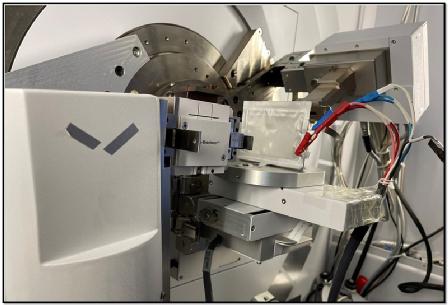
The Faraday Institution, a leader in energy storage research, has announced investment in a total of six key battery research projects aimed at delivering commercial impact. These existing projects on extending battery life, battery modelling, recycling and reuse, safety, solid-state batteries, and lithium-sulfur batteries, have been reshaped to focus on the areas with the greatest potential for success.
Professor Pam Thomas, CEO, Faraday Institution, commented: “The Faraday Institution is committed to identifying and investing in the most promising and impactful battery research initiatives. This project refocusing is an important part of that process, and allows us to direct even more effort towards those areas of research that offer the maximum potential of delivering societal, environmental, and commercial impact.”
Business and Trade Minister Nusrat Ghani said: “Growing the battery industry is vital to positioning the UK as the best location in the world to manufacture electric vehicles.
“This funding will help businesses become more innovative and productive, helping to create more skilled, high-wage jobs across the UK, future-proofing our economy and supporting our ambition towards a cleaner, greener future.”
The funding for these projects came from the Faraday Battery Challenge, delivered by Innovate UK for UK Research and Innovation.
WMG project details
Extending Battery Life
The Faraday Institution’s Degradation project, a centre of excellence in understanding degradation mechanisms in lithium nickel manganese cobalt oxide NMC811-graphite batteries, is expanding to investigate other systems of industrial interest. Researchers will apply their knowledge and new characterisation techniques to investigate the degradation of systems comprising silicon-rich composites and those using anode-free architectures. On the cathode side, the project will investigate the higher nickel content NMC, lithium manganese iron phosphate (LMFP), and tungsten-doped lithium nickel oxide (LNO). Tungsten-doped LNO is a promising material with high capacity that was developed by the Faraday Institution’s FutureCat project. Researchers will also investigate new electrolyte formulations compatible with the anode and cathodes under study and their impact on degradation.
The project will also include new pouch cell fabrication activity at WMG, which will allow researchers from across the project to access reproducible and reliable cells to perform degradation studies at more industrial-relevant scales. Pouch cells to be fabricated will include tungsten-doped LNO cathode developed at the University of Sheffield.
The project is led by Co-Principal Investigators Professor Dame Clare Grey, University of Cambridge, and Professor Louis Piper of WMG. The team also includes researchers from the universities of Birmingham, Newcastle, Oxford, Sheffield, Southampton, Imperial College London and UCL.
Battery Modelling
The Multi-scale Modelling project has been refocused to further develop parameterisation methods and techniques for next-generation models and modelling of batteries beyond lithium-ion. Researchers will focus on methods to determine accurate input parameters for models that define ageing and that accurately represent what happens at battery interfaces, which could support the growth of the Battery Parameterisation eXchange (BPX) standard being formed by the Faraday Institution.
Additionally, the project aims to grow the capabilities of PyBaMM, an open-source physics-based model, to enable better health and performance prediction at cell and pack level, linking to commercial software, and growing the PyBaMM community. The project will also develop ‘PRISM’, an industry-focused equivalent circuit model framework integrated with and complementary to PyBaMM, which will incorporate machine learning approaches.
The project is led by Prof Gregory Offer, Imperial College London, with additional researchers from the universities of Birmingham, Bristol, Oxford, Portsmouth, Southampton and Warwick.
Battery Safety (SafeBatt)
SafeBatt is investigating the science behind cell and battery failure using advanced instrumentation, imaging and high-speed techniques to characterise failure modes and investigate the interplay between cell ageing, degradation and safety. Cell-to-cell failure propagation is being studied and detection methods and mitigation strategies to prevent thermal runaway and propagation are being developed and demonstrated. A model that can predict thermal runaway and simulates the external flow of gas, heat and ejecta during failure will be developed, informing the design of safer battery systems.
The project will also conduct tests in larger format cells and at module level to help industry and other stakeholders understand how EV and micro-mobility battery packs and static energy storage systems fail in real-world scenarios. This builds on previous research that identified a potentially explosive vapour cloud, observed under certain conditions of lithium-ion cell failure. This research will continue to inform the project’s international dissemination activities (where SafeBatt researchers are playing a leadership role globally) and provide a central point of access for industry, government bodies and fire services seeking knowledge and engagement on lithium-ion battery safety related issues.
Led by Prof Paul Shearing of UCL, SafeBatt also includes researchers from the universities of Cambridge, King’s College London, Newcastle, Sheffield and Warwick.
Research in these areas will progress over the next two years to 31 March 2025.
AI triaging of shrapnel wounds developed through UK and Ukraine partnership
Researchers in the UK and Ukraine are teaming up to develop artificial intelligence (AI) that will help treat those wounded by shrapnel.
Scientists at WMG at the University of Warwick and the Kharkiv National University of Radio Electronics (NURE) in Ukraine are developing AI software that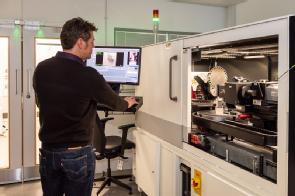 will help medics understand which patients require immediate treatment, due to life-threatening wounds that might not be obvious with the naked eye. The state-of-the-art technology enables users to feed data from a CT scan to a computer programme, which will help medics make quick decisions on which of the injured require most immediate treatment.
will help medics understand which patients require immediate treatment, due to life-threatening wounds that might not be obvious with the naked eye. The state-of-the-art technology enables users to feed data from a CT scan to a computer programme, which will help medics make quick decisions on which of the injured require most immediate treatment.
The project is one of 33 being discussed at the House of Lords this evening, to mark the one-year anniversary of the Twinning initiative – an institution-to-institution collaboration model which allows universities around the world to support their Ukrainian counterparts in real, concrete ways. It is funded by a £5m grant from Research England, administered by Universities UK International (UUKi).
Professor Mark Williams, WMG at the University of Warwick, said: “A huge problem for medics dealing with many severely injured people at the same time is the rapid identification of life-threatening injuries so they can prioritise who needs emergency surgery soonest. This is why we’re developing software with the team in Kharkiv to help address this issue. As well as being useful in other emergency situations such as earthquakes, the research is also applicable to doctors in trauma wards – already stretched by pressures experienced by the NHS – who need to triage patients quickly.
“For WMG’s part of the project, we will be creating phantom models using 3D imaging – replicas of human anatomy and shrapnel wounds. These will act as ‘test objects’, which experts in computer science can use to calibrate their technology and AI programme.
‘test objects’, which experts in computer science can use to calibrate their technology and AI programme.
“It is very exciting to be able to bring our expertise in Additive Manufacture at WMG to deliver a rapid solution to such an important humane need, allowing us to truly exploit the incredible advantages in speed of response and material complexity offered by this technology.”
Anastasiya Chupryna, coordinator of Radio Electronics-Warwick Allied Research and Development (REWARD) project at NURE said: “We would like to thank our partner Warwick University for supporting us in joint research activities. Within this project NURE and Warwick University will be able to solve extremely important problems. We believe that practical results of these projects will demonstrate significant impact and innovation solutions for society.”
WMG is considered the leading international role model for successful collaboration between academia and the public and private sectors by successive UK Governments. The WMG specific research is funded by a £179k grant from UUKi.
More here https://www.ukri.org/news/research-england-invests-in-uk-ukraine-university-twinning-scheme/
Ends
University of Warwick press office contact:
Annie Slinn
Communications Officer | Press & Media Relations |
Email: annie.slinn@warwick.ac.uk
